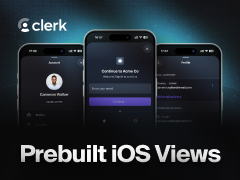By John Gruber

Clerk — Prebuilt iOS Views: drop-in authentication, profile, and user management.
- Apple Can Comply With the FBI Court Order
-
Dan Guido has a good piece on the technical aspects of what the FBI wants Apple to do:
Again in plain English, the FBI wants Apple to create a special version of iOS that only works on the one iPhone they have recovered. This customized version of iOS (*ahem* FBiOS) will ignore passcode entry delays, will not erase the device after any number of incorrect attempts, and will allow the FBI to hook up an external device to facilitate guessing the passcode. The FBI will send Apple the recovered iPhone so that this customized version of iOS never physically leaves the Apple campus.
As many jailbreakers are familiar, firmware can be loaded via Device Firmware Upgrade (DFU) Mode. Once an iPhone enters DFU mode, it will accept a new firmware image over a USB cable. Before any firmware image is loaded by an iPhone, the device first checks whether the firmware has a valid signature from Apple. This signature check is why the FBI cannot load new software onto an iPhone on their own — the FBI does not have the secret keys that Apple uses to sign firmware.
Guido thinks the situation would be very different if the iPhone were newer than a 5C:
At this point it is very important to mention that the recovered iPhone is a 5C. The 5C model iPhone lacks TouchID and, therefore, lacks the single most important security feature produced by Apple: the Secure Enclave.
If the San Bernardino gunmen had used an iPhone with the Secure Enclave, then there is little to nothing that Apple or the FBI could have done to guess the passcode. However, since the iPhone 5C lacks a Secure Enclave, nearly all of the passcode protections are implemented in software by the iOS operating system and, therefore, replaceable by a firmware update.
★ Wednesday, 17 February 2016
